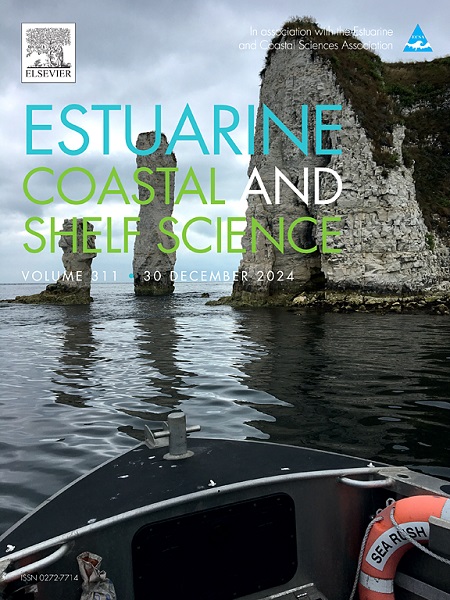Spatial redistribution difference between particle associate and free living bacteria in a micro-tidal influenced estuary
IF 2.6
3区 地球科学
Q1 MARINE & FRESHWATER BIOLOGY
引用次数: 0
Abstract
Microbial community variation in estuaries had been a research hotspot in recent years, but the effects of hydrodynamic forces on bacterial community redistribution remain underexplored. This study presents fixed-point observations of bacterial community redistribution under hydrodynamic influence during both dry and wet seasons. Alpha diversity analysis indicated that the bacterial community in the dry season exhibited higher richness and diversity than in the wet season, likely due to weaker hydrodynamics and lower temperatures. Co-occurrence network analysis showed that particle-associated (PA) communities had lower network diameter, graph density, and average path length than free-living (FL) communities. The FL community was more affected by vertical mixing, while the PA community was more affected by bottom flow. It is speculated that variation in the FL community results from the mixing of seawater and river water bacteria, which are more affected by surface currents, whereas PA community variation is driven by sedimentation and the bottom flow transport of particles. Unlike FL taxa, which correlated with real-time flow, PA taxa showed a stronger correlation with the flow data 1 h in the past, likely due to the greater inertial resistance of particulate matter compared to bacteria. This study highlights the differential behavior of PA and FL communities under hydrodynamic forces, enhancing the understanding of factors influencing bacterial community variation in estuaries.
微潮影响下河口颗粒伴生菌与自由活菌的空间再分布差异
河口微生物群落变化是近年来的研究热点,但水动力对细菌群落再分布的影响尚不充分。本研究提出了在干湿季节水动力影响下细菌群落再分布的定点观测。α多样性分析表明,干季细菌群落的丰富度和多样性高于湿季,这可能是由于水动力较弱和温度较低所致。共现网络分析表明,颗粒关联(PA)群落的网络直径、图密度和平均路径长度均低于自由生长(FL)群落。FL群落受垂直混合影响较大,PA群落受底部流动影响较大。推测FL群落的变化源于海水和河水细菌的混合,前者更受表层水流的影响,而PA群落的变化则受沉降和颗粒底流输运的驱动。与FL类群与实时流量相关不同,PA类群与过去1 h的流量数据相关性更强,这可能是由于颗粒物比细菌具有更大的惯性阻力。本研究突出了PA和FL群落在水动力作用下的差异行为,增强了对河口细菌群落变化影响因素的认识。
本文章由计算机程序翻译,如有差异,请以英文原文为准。
求助全文
约1分钟内获得全文
求助全文
来源期刊
CiteScore
5.60
自引率
7.10%
发文量
374
审稿时长
9 months
期刊介绍:
Estuarine, Coastal and Shelf Science is an international multidisciplinary journal devoted to the analysis of saline water phenomena ranging from the outer edge of the continental shelf to the upper limits of the tidal zone. The journal provides a unique forum, unifying the multidisciplinary approaches to the study of the oceanography of estuaries, coastal zones, and continental shelf seas. It features original research papers, review papers and short communications treating such disciplines as zoology, botany, geology, sedimentology, physical oceanography.

 求助内容:
求助内容: 应助结果提醒方式:
应助结果提醒方式:


